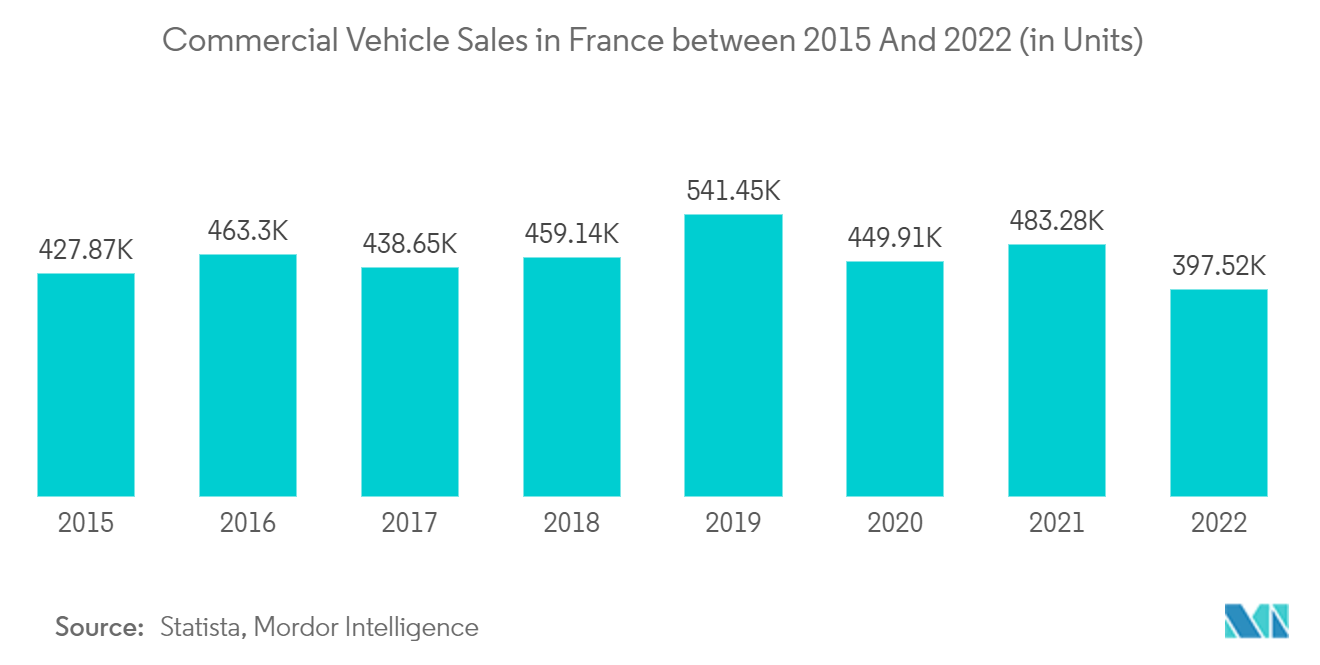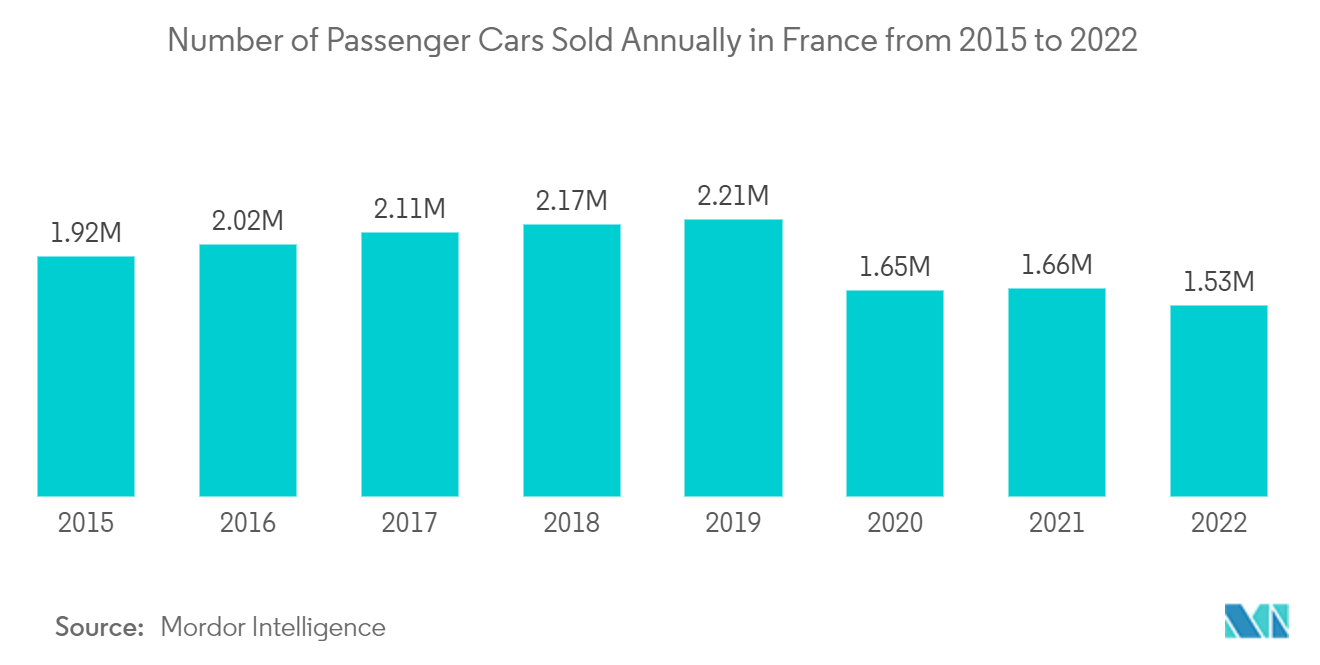Market Trends of France Automotive Parts Aluminium Die Casting Industry
Vacuum Die Casting Segment is Expected to Witness the Fastest Growth Rate
The vacuum die-casting segment is expected to witness the fastest growth rate during the forecast period. It is due to the increasing demand for high-quality and precision components in the automotive industry. Vacuum die casting is a process that uses a vacuum to create a pressure differential between the inside and outside of the die. This results in a more uniform casting with fewer defects.
Transmission cases, Engine blocks that require high precision, suspension components, etc., are manufactured by the vacuum die-casting method. Still, internal combustion engines (IC engines) continue to dominate the automotive market for several reasons despite the growing interest in electric and alternative propulsion technologies. IC engines are in use for over a century, which allowed manufacturers to refine and optimize this technology extensively. They are well-understood, reliable, and cost-effective to produce in large quantities.
The existing infrastructure for IC engines is vast and well-established. Gasoline and diesel fueling stations are widespread, making it convenient for consumers to refuel their vehicles. In contrast, building a comprehensive charging infrastructure for electric vehicles (EVs) is a significant challenge and investment.
Electrical and hydraulic components in an automobile work simultaneously. Reliability and quality are given prime importance in transmission parts. The transmission system in an automobile is a complex combination of mechanical functions. It is prone to extreme conditions and environments. It enhances the importance of integrity. Valve bodies, stators, and clutch pistons are some of the commonly die-casted transmission parts in the automotive industry.
Ultra-vacuum die casting produces better weldable automotive products than most other die-casting processes. However, products produced through this process are large and require huge-sized die casting machines, like 2,500-4,000 metric tons of die clamping force. It impacts the popularity of the ultra-high-vacuum die-casting process among OEMs and large die casters.
However, the vacuum die-casting production process eliminates air from the mold. It allows the front of molten metal to merge freely without forming any shuts or pores, which is a major issue in the pressure die-casting process.
Overall, the vacuum die casting segment in the French automotive parts aluminum die casting market is witnessing rapid growth due to its ability to meet the evolving demands of the automotive industry. Factors such as lightweighting, superior quality, cost-efficiency, sustainability, and advancements in materials are driving this growth. With ongoing innovation and collaboration, vacuum die casting is poised to play an important role in shaping the future of automotive manufacturing in France, supporting the industry's transition towards more sustainable and efficient mobility solutions.

Growth in Vehicle sales will drive the market in Coming year
The country's economy is growing, and the disposable income of middle-class consumers is also increasing. It, in turn, reflects positively on the growing demand for vehicles. For instance, In 2022, the French auto industry sold nearly 1.93 million motor vehicles.
However, to meet the air quality goals, the government is encouraging the sales of lightweight, efficient automobiles and electric vehicles in the country. Aluminum gravity die-casting parts are increasingly used in automobiles to reduce their weight and make them more efficient. This move by the manufacturers is expected to help the market grow during the forecast period. As a result, France's imports of aluminum were USD 9.86 billion in 2022, according to the United Nations COMTRADE database on international trade.
The automotive industry is one of the biggest contributors to France's foreign trade balance. France is the third-largest automaker in Europe, with Peugeot Citroen and Renault Nissan serving as the major brands leading the French automotive industry.
The government is not only trying to help local automobile companies, such as Renault SA and PSA Peugeot Citroen, but it is also aiming to invite foreign companies to invest in the country.
Additionally, lightweight vehicles and energy-saving trends are driving the demand for the market. Moreover, the French die-casting market is experiencing an increased adoption of competitive technology for increasing their production.
The forging and casting industries are powerful players with significant economic and commercial impact in the country. They include a revenue of more than EUR 5.5 billion in France, which is the third largest manufacturer in the European market.
Furthermore, manufacturing production in France increased by 4.20% in November of 2022 over the same month in the previous year. Thus, the demand for die-casting components and equipment is expected to rise during the forecast period due to the rising manufacturing industry.
Additionally, the demand for die-casted parts from buildings and public works is likely to propel the foundry industry production capacity during the forecast period.


